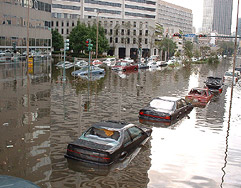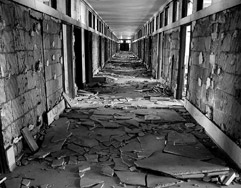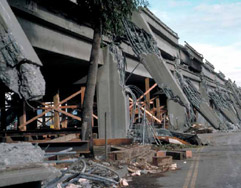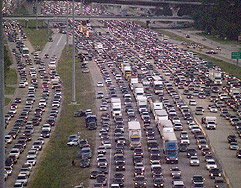UNITED STATES DEPARTMENT OF ENERGY
Graphic by Sarah Gerrity, Department of Energy.
It’s #GridWeek on Energy.gov. We’re highlighting our efforts to maintain a reliable, resilient and secure electric grid across the country, and what that means for you. We’ll be hosting a Twitter chat on How the Grid Works on Thursday November 20 at 2 PM EDT. Send us your questions on Twitter, Facebook and Google+ using #GridWeek.
Ever since Thomas Edison and Nikola Tesla battled it out during the War of the Currents in the late 19th century, electricity has been a central part of life in America. We are constantly connected to the power grid, which keeps our food refrigerated, our homes heated, our computers running and our rooms lit. Power lines, transmission stations and power plants have become a part of the landscape — to the point that we hardly notice them.
But have you ever really thought about the complex system that generates electricity, carries it across miles of transmission lines and then delivers it to your home?
As you can see in the infographic above, our power grid is a network of power plants, substations, transformers, wires, sensors and poles that carry electricity sometimes hundreds of miles to be distributed to our homes, schools and offices.
Parts of this network are more than a century old — 70 percent of the grid’s transmission lines and power transformers are over 25 years old, and the average age of power plants is over 30 years old. Today, our electricity needs are more sophisticated and the strain on the grid is higher than ever.
That’s why our experts are working to strengthen and update the grid with new technologies that help prevent outages, provide for cybersecurity and enable real-time data sharing, among other innovations.
Our electrical grid has served us well for more than 100 years, and we are working to ensure it continues for many years to come.
View original post (ENERGY.gov): Understanding the Grid
Tags: electric grid, Sarah Gerrity, United States Department of Energy, USDOE







 RSS Feed
RSS Feed